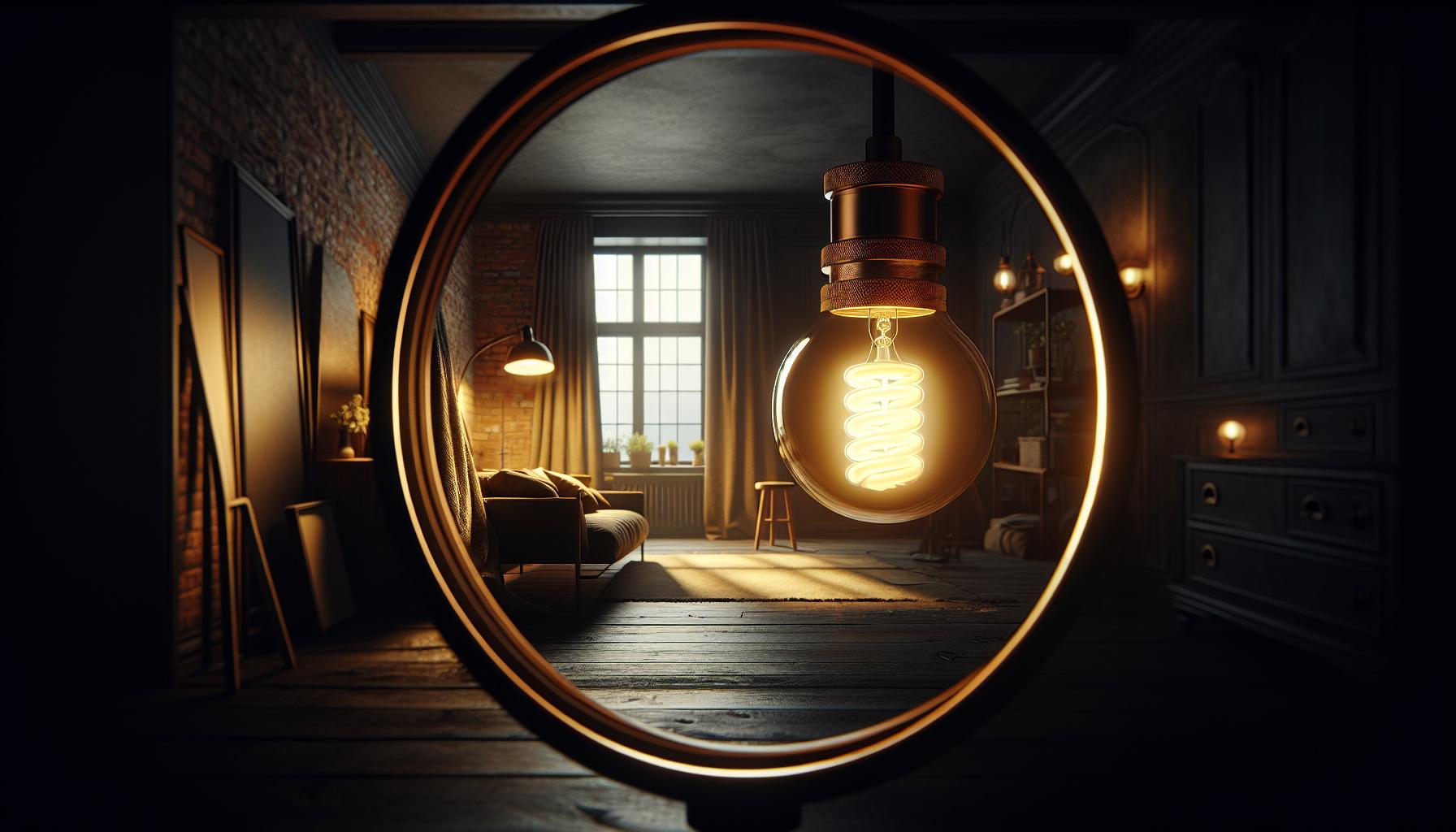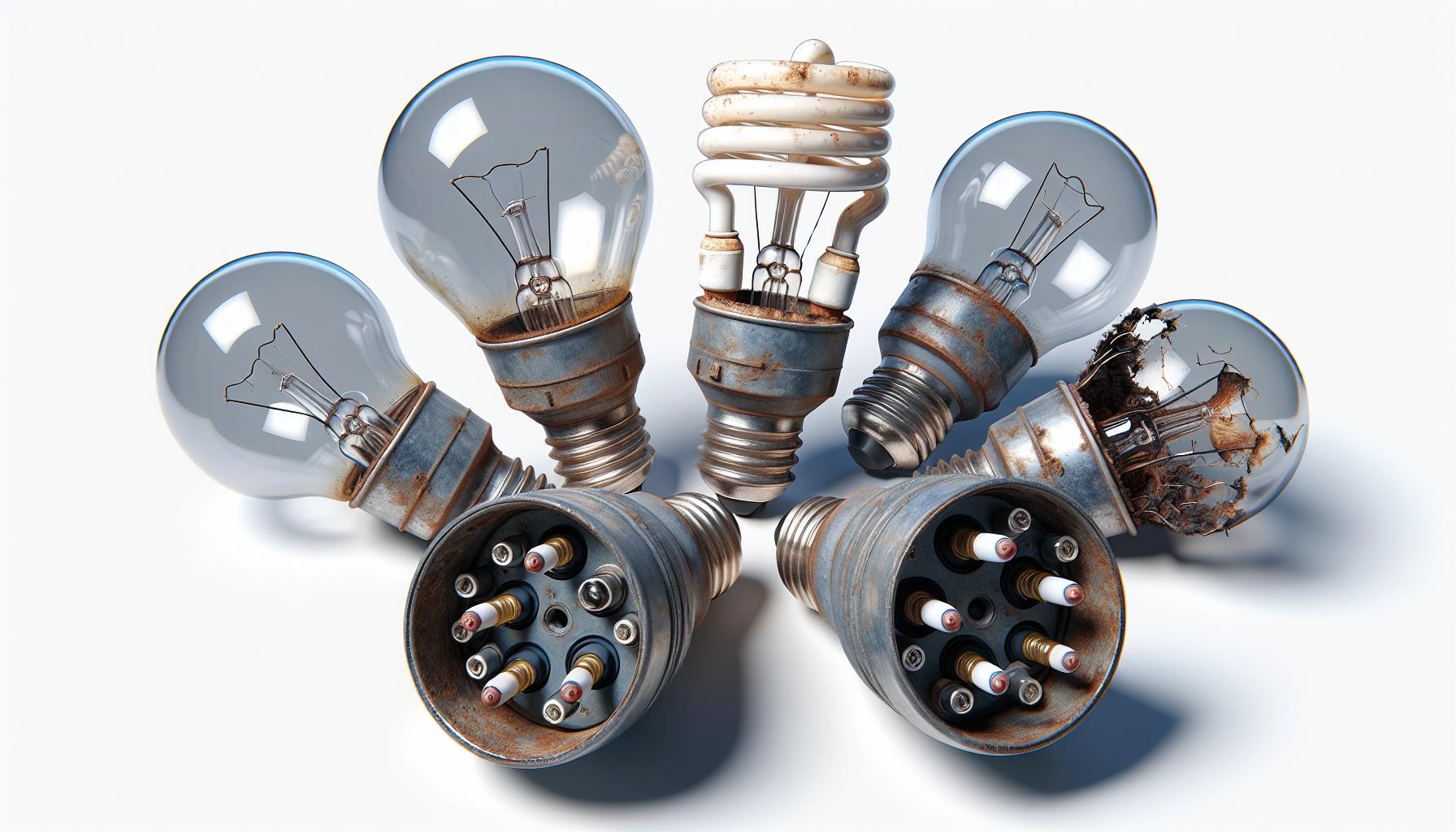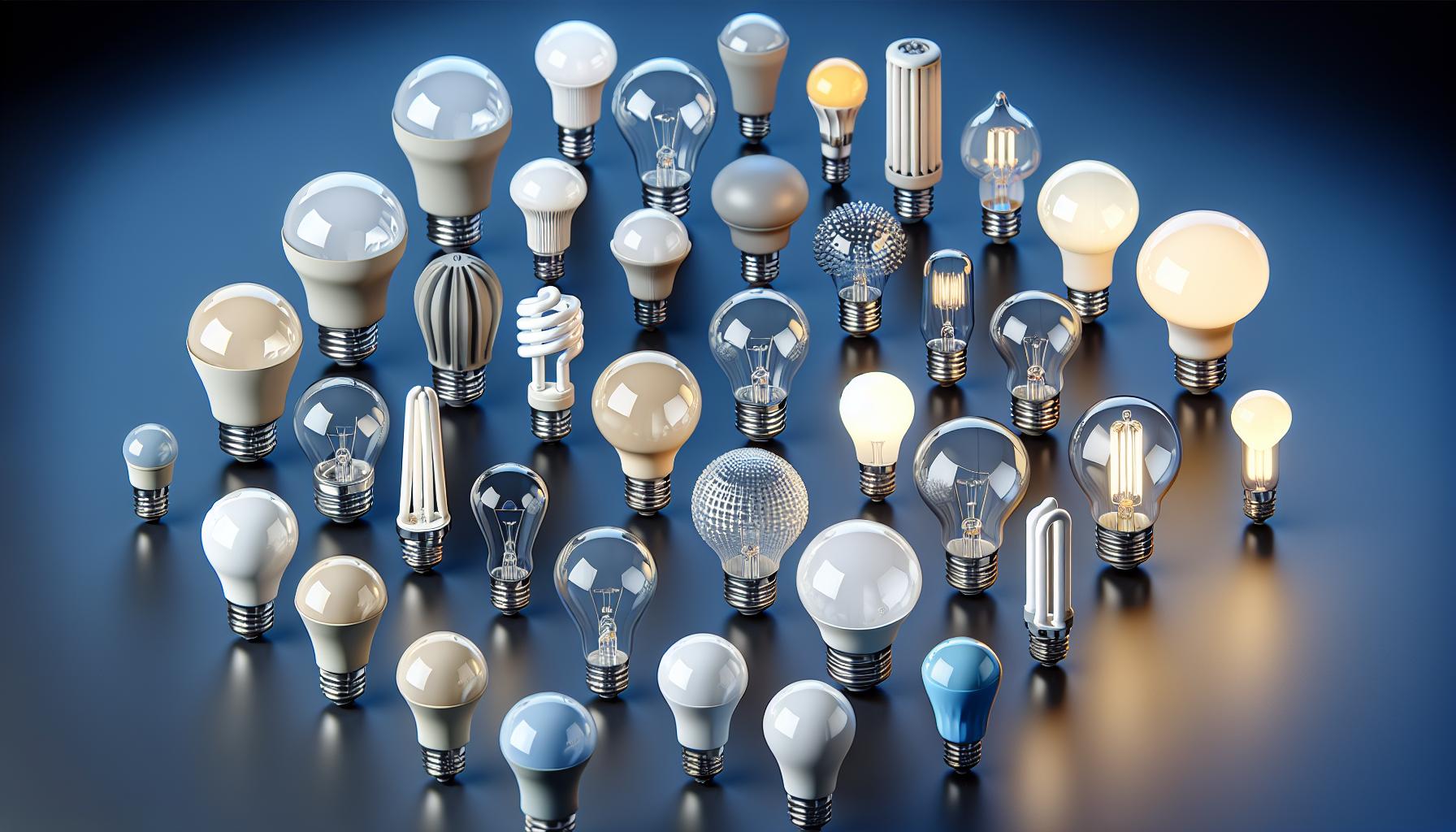Ever popped in a new light bulb only to find something’s not quite right? It’s a simple mistake, but using the wrong bulb can lead to a few unexpected issues. You might think it’s just about brightness, but there’s more to it than meets the eye.
From flickering lights to potential safety hazards, the consequences can range from mildly annoying to downright dangerous. Let’s shed some light on what really happens when you mismatch your bulbs, and why it’s worth double-checking before you twist that new bulb into place.
Why using the wrong light bulb matters
You’ve probably heard it before: lighting is key. But what you might not know is that using the wrong light bulb is not just a minor inconvenience—it can have significant repercussions. With your love for home DIY projects, you understand the satisfaction of getting every detail just right. The light bulb you choose is one of those critical details.
Incorrect light bulbs can result in poor lighting quality, which affects the ambiance of a room and can strain your eyes. Imagine sitting down to tackle a new project, and the lighting is so off that it throws a shadow over your work. Frustrating, right? However, the impact runs deeper than just ambiance or visual discomfort.
When it comes to your lighting fixtures, each is designed with specific requirements in mind, like the maximum wattage it can handle safely. If you accidentally use a bulb that exceeds this wattage, you’re potentially inviting a fire hazard into your home. Safety should always be a top priority, especially in your DIY endeavors.
Moreover, the wrong bulb can also lead to increased energy consumption. Let’s say your fixture is designed for an energy-efficient LED, but you’ve put in a halogen bulb instead. The energy usage can spike without you realizing it, and before you know it, you’re paying more on your electric bill.
- Impact of Using the Wrong Light Bulb:
- Decreased lighting quality
- Eye strain and discomfort
- Potential safety hazards
- Increased energy bills
Keeping up with the technical aspects might seem tedious, but they’re crucial to ensuring that your home remains a safe and welcoming place. Next time you’re replacing a light bulb, take a quick second to peek at the label on your fixture. That tiny action could save you from a host of lighting issues down the road. Remember, when in doubt, always consult the specifications or ask an expert. Your home’s lighting is not just about illumination—it’s about creating a safe, efficient, and comfortable environment for all those DIY projects you love so much.
What happens when you use a higher wattage bulb
When you’re immersed in DIY home projects and dabble with lighting, it’s vital to consider the wattage of light bulbs. Have you ever wondered what happens if you pop a higher wattage bulb into a fixture than it’s designed for? It might seem like a bright idea to get more light, but it’s not without risks.
Higher wattage bulbs generate more heat. That’s the first and foremost issue. A fixture rated for a 60-watt bulb that ends up hosting a 100-watt bulb is going to experience temperatures it wasn’t designed to handle. Over time, this can result in damage to the light fixture, socket, and wiring. In extreme cases, this may even lead to a fire hazard. Always adhere to the recommended maximum wattage to prevent these risks.
Besides the safety concerns, there’s an efficiency factor to consider. Fixtures tailored to lower wattage are optimized to provide the best lighting with minimal energy. Ignoring these specifications not only puts a strain on the system but can also lead to increased energy consumption.
Here’s a simple breakdown:
| Recommended Wattage | Bulb Used | Possible Outcome |
|---|---|---|
| 60W | 100W | Overheating, potential fire risk |
| 40W | 75W | Decreased efficiency, wiring damage |
Lastly, there’s the longevity of the bulb. Higher wattage bulbs in the wrong socket won’t last as long. They burn brighter and faster, meaning you’ll replace them more often than if you’d used the correct wattage. It’s not just about upfront costs; it’s also about the long-term investment in your lighting solutions.
So the next time you’re at the store eyeing that higher wattage bulb, remember to check the fixture’s label back home. It’s not just a simple swap. It’s an informed choice to keep your lighting brilliant, your home safe, and your energy bill in check. Keep delving into the world of DIY lighting with safety and knowledge as your guides.
What happens when you use a lower wattage bulb
« What Causes Light Bulbs to Keep Blowing? Uncover the Shocking Reasons
What Does Light Bulb Do? Unlock a World of Benefits for Your Home »
Switching gears from the hazards of high-wattage bulbs, let’s shed some light on the flip side of the coin. When you opt for a bulb with a lower wattage than what’s suggested, you’re diving into a different—typically less hazardous—set of issues.
First off, brightness levels will take a hit. Lower wattage means less power, and naturally, that translates to dimmer light. This might not be a concern in all areas of your home. In fact, in spaces like your bedroom or lounge where you prefer a relaxed ambiance, a lower wattage bulb could inadvertently create the perfect mood.
But that’s not to say there aren’t drawbacks. Using a bulb that’s not as bright as the fixture is designed for can leave some areas of your room languishing in the shadows. Task-oriented spaces, like your kitchen countertops or your home office, need ample lighting. An improperly lit space can strain your eyes and may even lead to headaches.
Here’s another thing to consider—energy efficiency. You might think choosing a lower wattage bulb would automatically save you money on electricity. While this is true to an extent, it’s more nuanced. Yes, lower wattage bulbs use less power, but if you need to use multiple lamps or fixtures to achieve the desired brightness, you may not be conserving energy or saving money at all.
Don’t forget the aesthetics. The right lighting can make or break the look and feel of a room. A lower wattage bulb might not synchronize well with the design intentions and can affect the overall atmosphere and experience of the space.
And finally, compatibility. While lower wattage bulbs are generally safer in terms of overheating risks, some modern lighting systems, especially those designed for LEDs, require bulbs to draw a certain amount of power to function correctly. In such scenarios, a bulb with too low wattage may not work or could affect the performance of the lighting system.
Keep these considerations in mind the next time you reach for a light bulb with a wattage lower than your fixture’s recommendation. It’s not just about what fits—it’s about what works optimally for your space and your needs.
The dangers of using the wrong type of bulb
As a lighting aficionado and ardent DIYer, you know that each light bulb plays a critical role in the safety and beauty of your home. But did you know that the repercussions of using an incorrect bulb can extend beyond mere inconvenience to severe safety risks? Yes, lighting is not just about setting the right mood or brightness—it’s about ensuring your home’s safety.
Overheating is one of the most pressing dangers when you pop in a bulb that’s not meant for the fixture. A mismatch in wattage can make the temperature rise exponentially within the fixture, potentially melting the socket and insulation of the wires. This can not just damage the fixture permanently but also pose a fire hazard. Considering that electrical fires account for a significant chunk of household fires, this is not a risk you should take lightly.
Another risk involves bulbs with incompatible base types or shapes. Improper fitting can lead to sporadic electrical contact causing flickering lights which may seem harmless but may signify a deeper electrical issue at play. This can stress your home’s wiring system which again circles back to the potential fire risk.
Let’s talk about halogen bulbs. These are coveted for their intense brightness, but they run hot—a lot hotter than you might expect. Placing a halogen bulb in an enclosed fixture not designed for it could result in a similar overheating issue, with the added burden of increasing the room temperature. This can tip the scales on your cooling bills, especially during those long, hot summer months.
In addition to safety, using the wrong bulb can sabotage the efficiency of your lighting. For example, placing a low wattage bulb in a high wattage required fixture won’t just produce poor light but will require multiple bulbs to achieve the same brightness which is neither cost-effective nor energy-efficient. And vice versa, a high wattage bulb in a low wattage fixture overpowers the space, wasting energy and potentially overpowering the intended ambiance.
Remember, staying informed about the types of bulbs and their appropriate fixtures is not just a matter of aesthetics; it’s a fundamental aspect of home safety and efficiency. Always check the fixture’s specifications before choosing your bulb, and match it to the requirements as if you’re pairing a fine wine with a gourmet meal – with precision and care.
Ways to avoid using the wrong light bulb
When embarking on your next DIY project or switching out a dim bedroom light, it’s crucial to ensure you’re picking the correct bulb. Here’s how you can avoid the common misstep of using the wrong light bulb.
Check the Fixture’s Rating
Every light fixture has a rating that specifies the maximum wattage you can use. You’ll typically find this info on a sticker or label near the bulb socket. Exceeding this rating can lead to electrical mishaps, so it’s vital to adhere to these guidelines.
Understand Bulb Base Types
The base of the bulb needs to match the socket. An E26 base is standard in the US, but there’s a variety of other sizes like E12 or GU10. If you force a mismatched bulb, you might damage the socket or the bulb.
Match the Bulb Shape to Your Fixture
Light fixtures are designed for specific bulb shapes to optimize light distribution. Using the intended shape maintains the aesthetic and function. For instance, a globe bulb works perfectly with vanity lights while a flood bulb is ideal for recessed lighting.
Consider Dimmer Compatibility
If your fixture has a dimmer, make sure your bulb is dimmable. Non-dimmable bulbs can flicker or not work at all when paired with a dimmer switch.
Be Mindful of Color Temperature
Color temperature affects the ambiance of a room. Warm whites create cozy spaces while cool whites invigorate them. Check the Kelvin rating on the bulb’s packaging to match it to your desired setting.
By keeping these tips in mind, you’ll be equipping your home with the right light, providing both safety and the perfect illumination for your spaces. You’ll find that when you pay attention to the small details, your lighting can transform a room from good to breathtaking.
Conclusion
You’ve got the know-how to steer clear of the common pitfalls when picking out light bulbs. Remember, it’s all about matching the right bulb to your fixture to keep things safe and shining bright. Stick to the fixture’s rating, know your bulb bases and shapes, and make sure everything’s in sync with your dimmers and desired ambiance. With these tips in your back pocket, you’ll light up your space just right, without a hitch. Now go on, illuminate your world with confidence!
Frequently Asked Questions
What are the risks of using the wrong light bulb wattage?
Using a higher wattage bulb than recommended can lead to overheating, which may cause damage to the light fixture, melting of the socket, and increased risk of fire.
How can incompatible bulb bases or shapes affect my lighting?
Incompatible bulb bases won’t fit the fixture, and the wrong shape can affect the distribution of light or may not fit in the fixture at all, leading to poor illumination or additional hazards.
Why shouldn’t I use halogen bulbs in enclosed fixtures?
Halogen bulbs generate a lot of heat which, when used in enclosed fixtures, could lead to overheating, shortened bulb life, or even pose a fire hazard due to intense temperatures.
How can I ensure I’m using the right light bulb for my fixture?
Always check the fixture’s rating for maximum wattage and match the bulb base and shape to the fixture. Also consider dimmer compatibility and the color temperature to ensure proper illumination and safety.
What is dimmer compatibility and why is it important?
Dimmer compatibility means that the light bulb is designed to work with dimmer switches. Using a non-compatible bulb with a dimmer can cause flickering, noise, and reduced bulb life.





